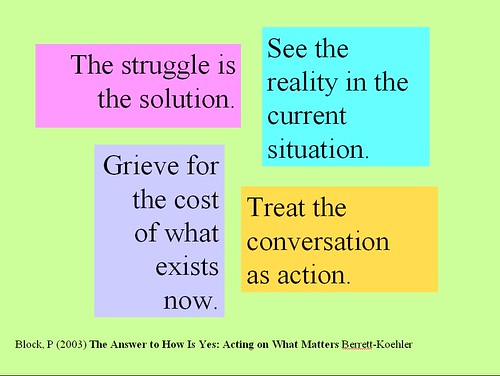 My March post on SharePoint Tom Vander Wall Nails My Sharepoint Experience continues to get hits in a way few of my hundreds of blog posts ever have. Hmmm… Something is a ‘cooking.
My March post on SharePoint Tom Vander Wall Nails My Sharepoint Experience continues to get hits in a way few of my hundreds of blog posts ever have. Hmmm… Something is a ‘cooking.
In the past week three separate conversations have come up about the challenges of using SharePoint as an organizational intranet or portal in international NGOs. (I presume this applies to US non profits as well, but oddly, I have heard of far fewer use cases.) In each case there have been the following factors where the organization:
- was a beneficiary of free or low cost SharePoint software
- did little to no assessment of their own needs and contexts
- had (are) used shared folders in the past as their main “collaboration” approach
- identified “collaboration” as a reason for implementing SharePoint
- did not have sufficient culture/leadership/process elements in place for the adoption.
And the implementations struggle…
So I keep telling myself, should I just say “NO” when an organization asks me to get involved in their SharePoint project? Are the silos and folder metaphors and the organizations that choose them too antithetical to my understanding of collaboration? Am I really missing something about the use of SharePoint and it’s related products?
I think it is time to throw down a gauntlet. Or propose a challenge. I HATE seeing the social and finacial capital lost on failed SharePoint installs. There has to be a more productive path. SO let’s figure it out.
This challenge open to any NGO/NPO/Consultant working with SharePoint and anyone from Microsoft and their vendors who want to play.If you or someone you know might be interested, point them here.
Here’s the goal: Let’s look at these challenges and failures and figure out if…
- There is a way to make SharePoint work as a collaboration platform (as opposed to a content repository). This includes technology and process.
- And if not, articulate why and share that with Microsoft SharePoint developers (and I hope they won’t just tell use we are misguided or want something that is indeed, not useful. I’ve heard that before with respect to Microsoft Live meeting shortcomings…)
Post a comment if you want to play and a little bit about you. NPO/NGO folks, I’m particularly interested in people responsible not just for the tech support of SharePoint in your org, but for fostering and evaluating its use. In a week, we’ll see who wants to play and we’ll figure out how to get the conversation going.
It is time to fish or cut bait and I want to FISH!

 My March post on SharePoint
My March post on SharePoint  I was cruising through my blog reader, hopelessly “behind” in reading (my own construction – I know I can “mark all read!”) and came upon a post from
I was cruising through my blog reader, hopelessly “behind” in reading (my own construction – I know I can “mark all read!”) and came upon a post from